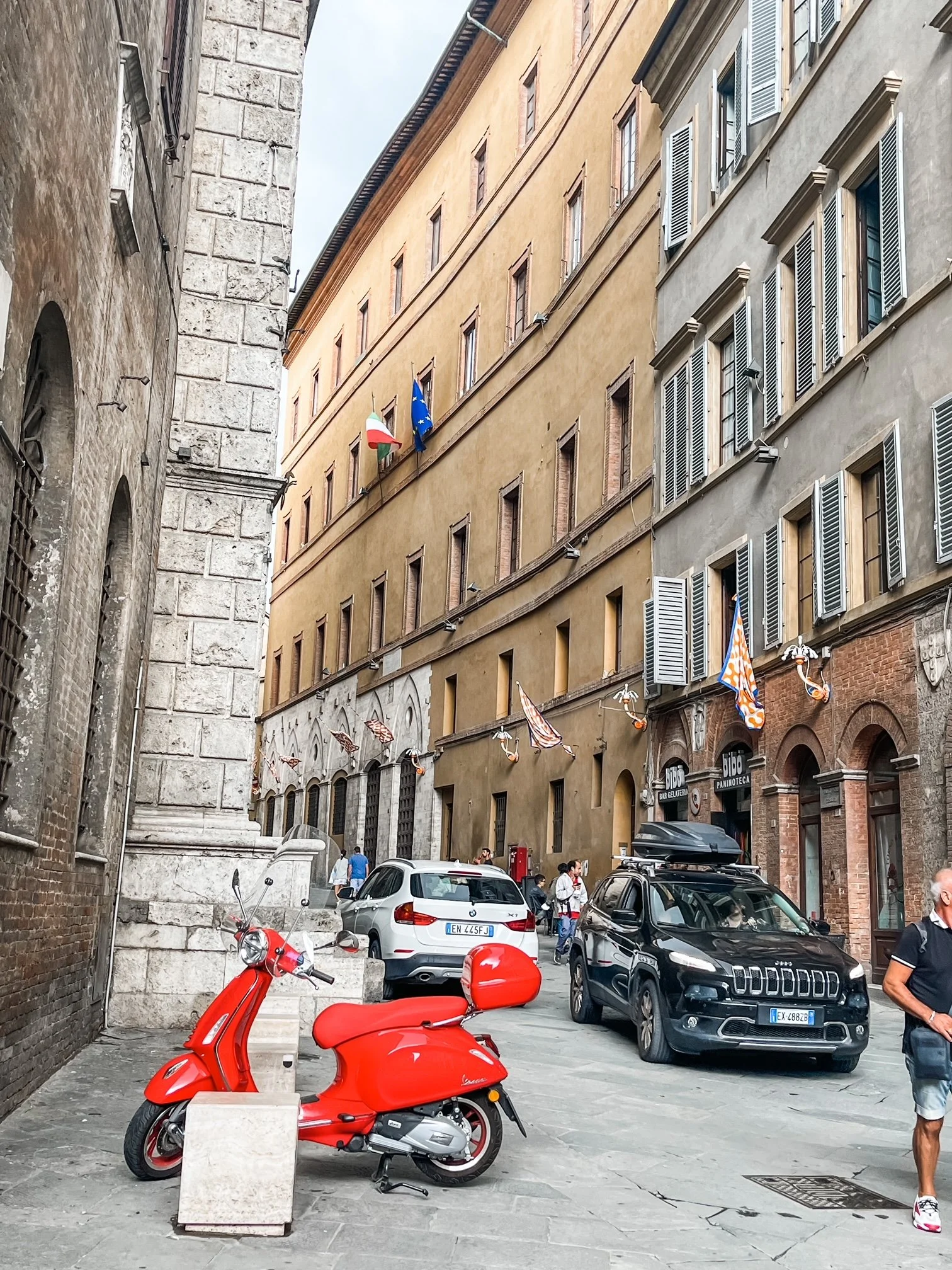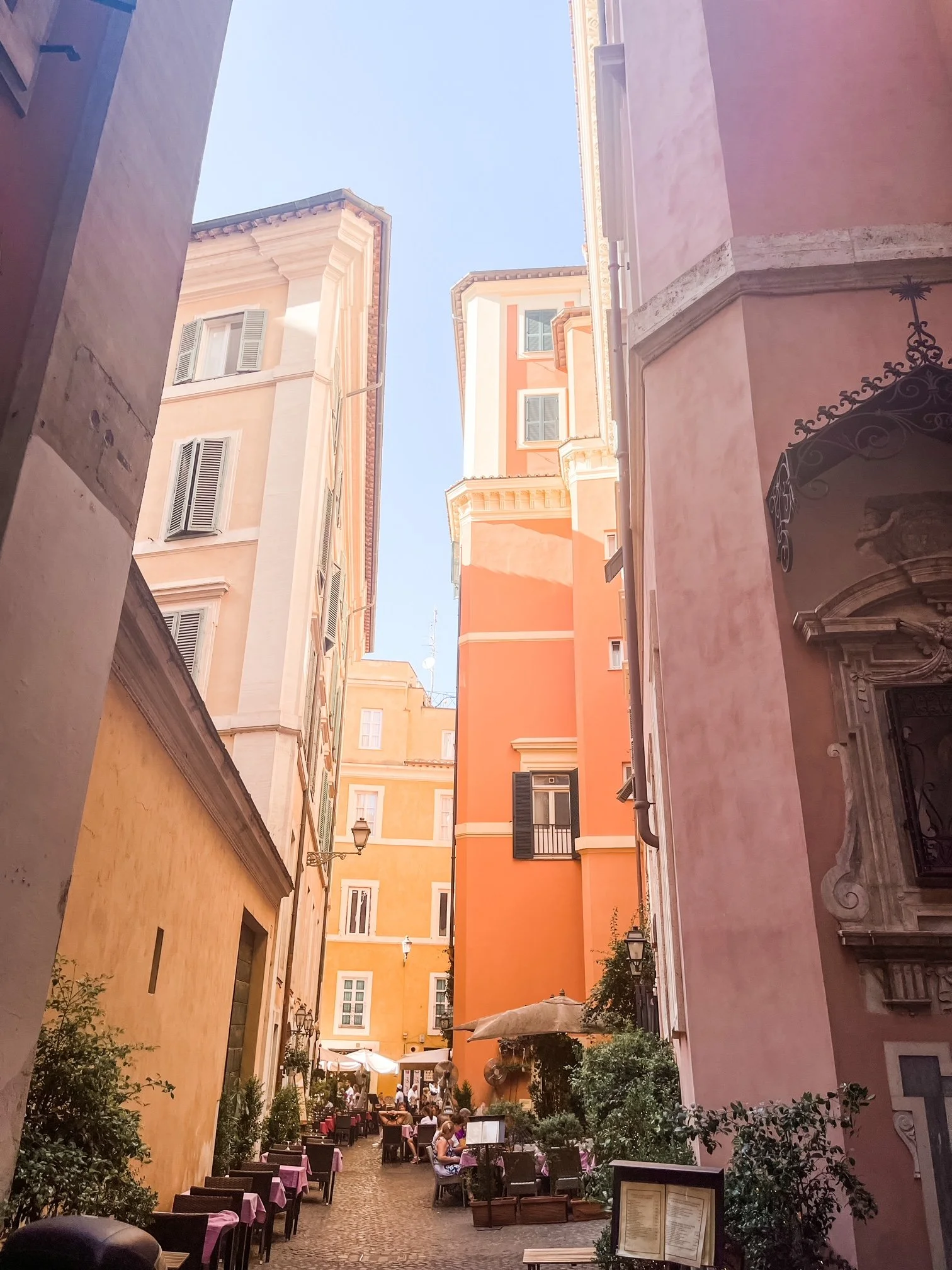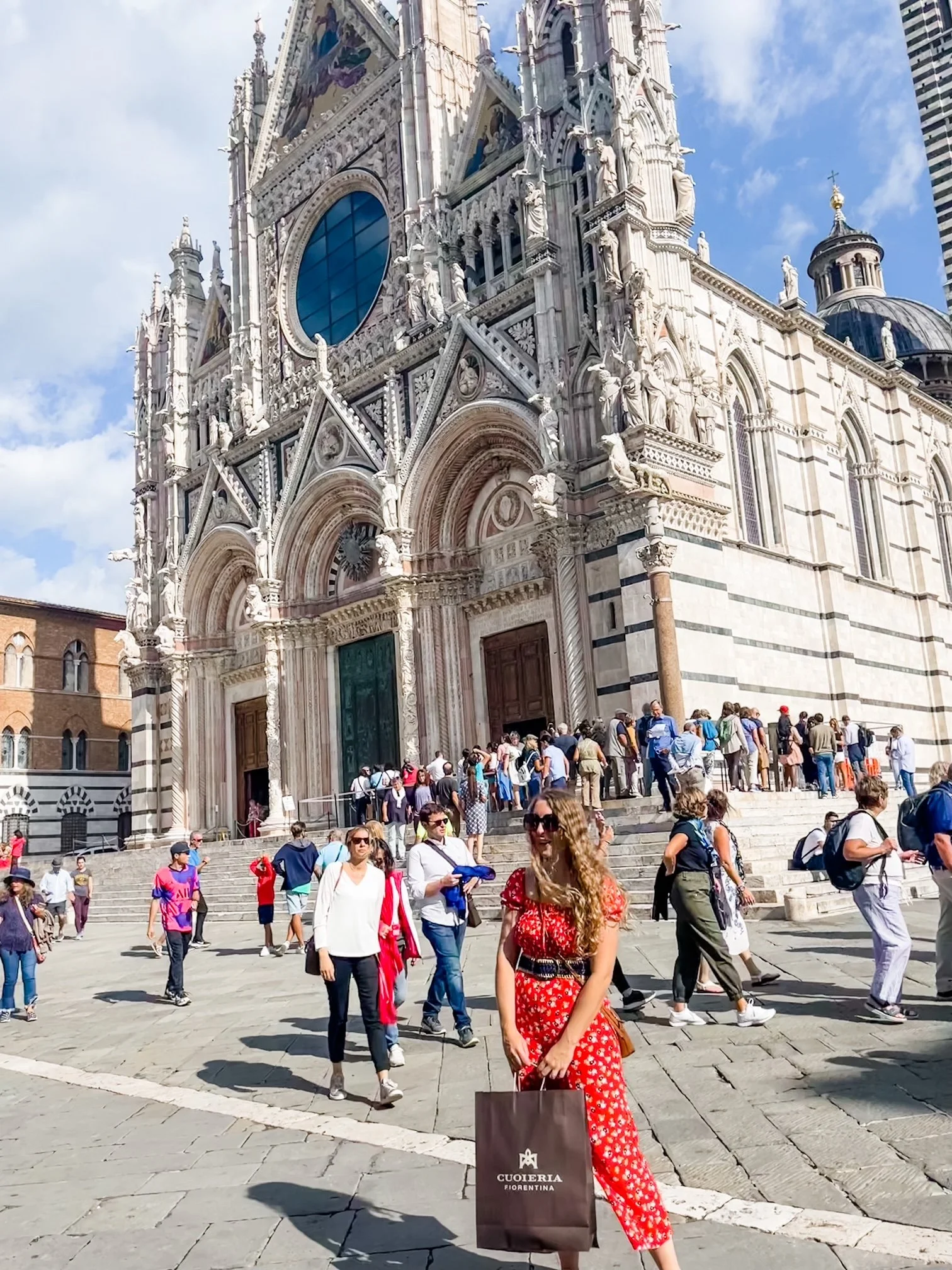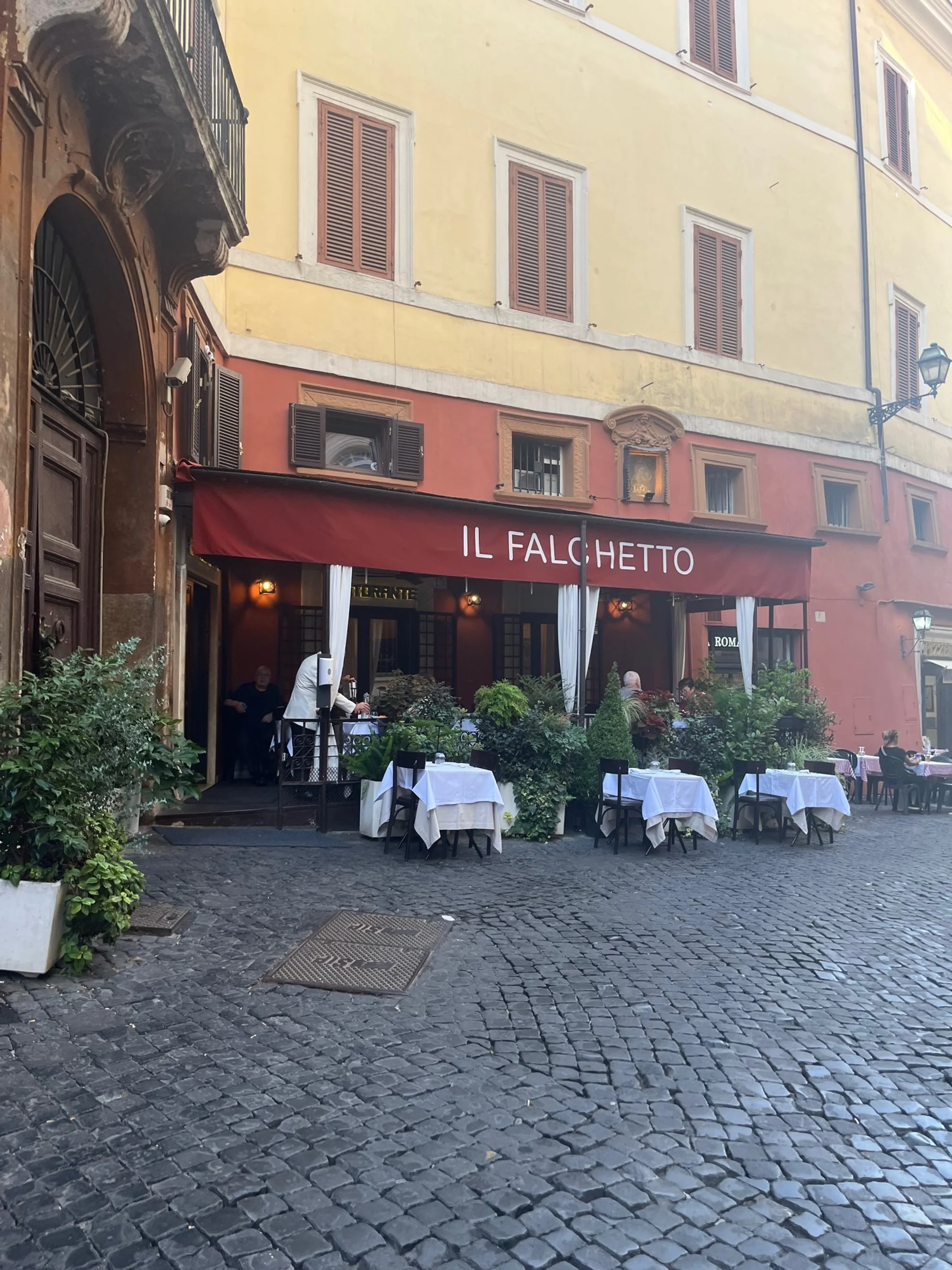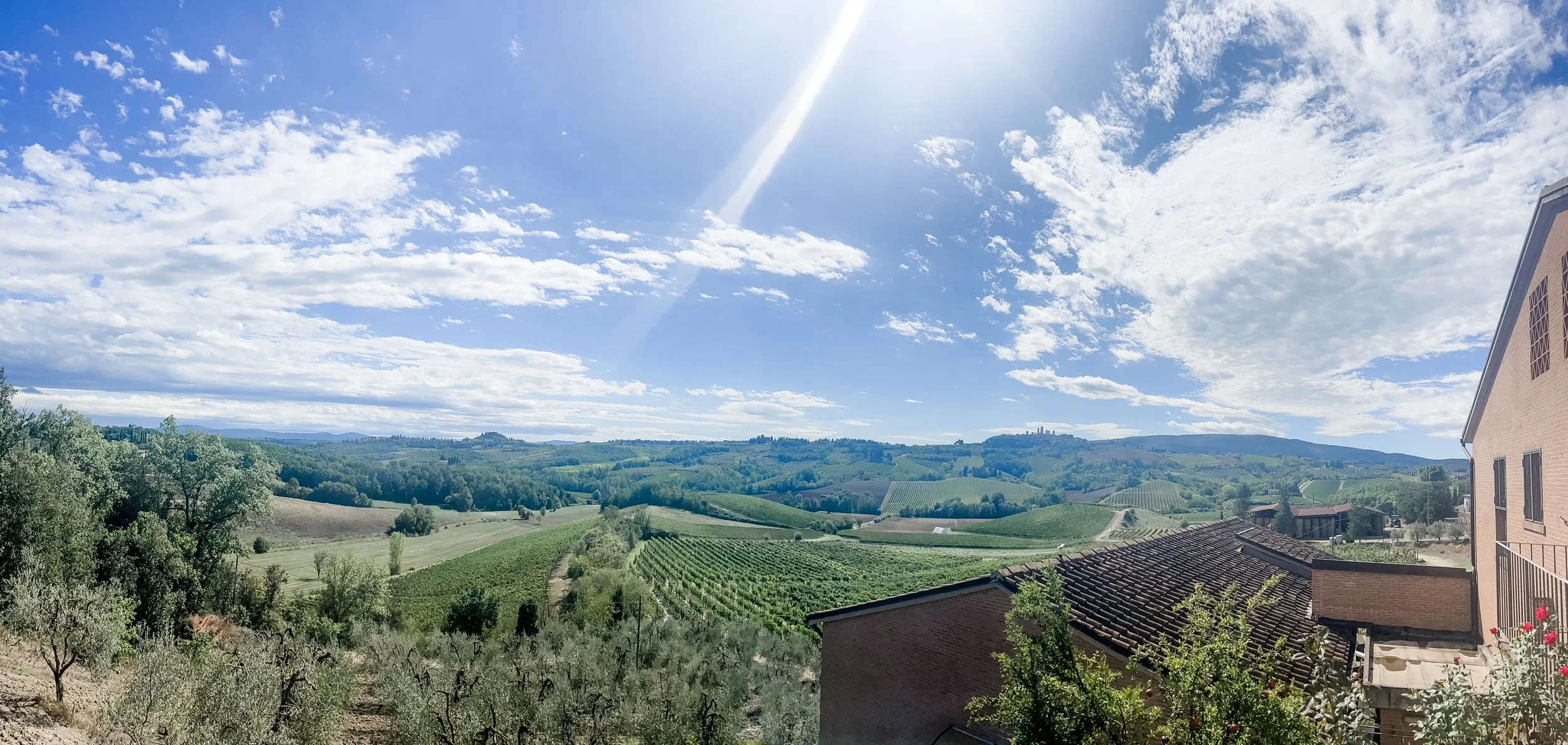The First Timer's Guide to Italy
Welcome to the land of la dolce vita. Whether you’re headed for ancient history in Rome, Renaissance art in Florence, fashion in Milan, the Medieval hilltop towns of Tuscany or the captivating coasts of Southern Italy, Italy has as many flavors of the sweet life as it does gelato.
Aside from the incredible sites to see, it’s hard to not to fall in love with al fresco dining in palazzos, spritzes by the water, opera singers in the streets, charming old cities and warm people who make you feel part of the famiglia.
With so much to see and do in this small but wonder-filled country, where do you begin planning a trip?
This guide is here to give you the need-to-know about exploring L’Italia for the first time, whether you’re in the stage of early wanderlust dreaming or the serious research phase. Guides to cities like Rome, Florence and Amalfi are coming soon, but first, let’s get the lay of the land.
Allora…
Getting to Italy
Rome Fiumicino is a large, international airport that supports dozens of airlines. It’s also centrally located in the country and a great place to fly in and out of. It’s about an eight-hour flight from the east coast of the U.S. to Rome.
You’ll also find airports in major cities like Florence and Naples, and when you’re making your plans, you might think it makes the most sense to fly into one and out of the other as you make your way up and down the country. Plenty of people do this, but I ultimately found it best to fly in and out of Rome, despite visiting both Florence and Amalfi on my trip.
There were far more flight options in Rome, and many of the flights from other cities in Italy connect through Rome anyway. You might find the train offers you better options to move between cities than trying to do a layover in Rome. Also, if you plan to use points to book your flight, you might find your rewards options are limited for the smaller airports.
Planning Your Itinerary
For such a small and accessible country, Italy can be a challenging trip to plan. And it’s exactly its size and accessibility that makes it difficult: there’s too much to see too close together!
You plan to see Rome and Florence, and then realize Florence is only an hour from Venice. You plan your dream week in Positano and then realize Capri, Sorrento, Ischia and Pompeii are all only an hour away. It’s overwhelming! And what’s not very dolce? Being exhausted from trying to do too much on one trip.
I made 20 different itineraries before I landed on my final one. And while your trip is ultimately about what’s important to you, here are some tips that helped me land on my final plan:
Visit no more than two big cities in a week. There’s no doubt you could easily spend a week or more just exploring a single city like Rome or Florence – especially if you’re the type who wants to go into every museum and church. But, if you’re willing to prioritize your list of “must sees,” you can certainly do two cities in a week without being overwhelmed or moving around too much. Every week you add to your trip opens up more possibilities.
Pick a region. Italy is a small country, which means traveling its length in a day isn’t unreasonable to do (it only takes three hours to go from Florence to Naples on a high-speed train, for example). But with so much to see in every region, you can miss out on a lot if you spread yourself too thin.
You might choose to niche down and truly focus on one area: Tuscany, Amalfi Coast, Lake Como, etc. Or if you want to take the “sampler platter” approach, at minimum, focusing on Northern, Central or Southern Italy can help you make the most of your time.
Northern Italy will give you places like Milan, Venice, Lake Como, Bologna and Cinque Terre. Central Italy gives you Florence, Rome and Tuscany, with all of its towns to choose from. Southern Italy gives you Naples, Pompeii, all of the stunning towns on the Amalfi Coast. Since Rome and Florence were the two cities on the top of my list, I spent my first week in Central Italy and then spent my second week on the Amalfi Coast.
Make peace with not seeing everything. Every destination in Italy has more incredible scenery, food, art and history than you could possibly see in one trip…and there are a whole lot of destinations to choose from.
You will find a range of opinions about how many cities you should try to do, how many days you should have in each city, etc. – but the most important thing is accepting that you won’t be able to do it all. Once you understand that you will have to pick and choose what you will see on your first trip, you can start to decide what type of trip you want to have.
If seeing more sites is important to you, then don’t travel around as much. If seeing more cities and regions is important to you, then accept that you might have to skip some sites or museums. The biggest tip I can offer is to not try to cram so much in that you’re rushing and overscheduled all day, and on the flip side, don’t spend so little time in each place that you have to miss major sites and leave frustrated. Give yourself two to three days per city, and book no more than two sites or tours per day.
Most importantly, remember it’s YOUR trip! Don’t feel like you have to see something just because you’re there and it’s famous.
Book tours. Walking around in herds of tourists wearing lanyards and headsets is not normally my idea of a good time, but in Italy, you’re going to want to book tours. There is far too much rich history that you will miss without someone showing you around, and Italian tour guides are extremely qualified and typically subject matter experts – it’s a licensed profession that requires a very tough exam. I did the Colosseum and Forum without a guide and still regret it to this day. Tours will also help you anchor your schedule as you plan your itinerary and make sure you’re leaving some time to just wander and enjoy yourself. Viator is a great site for booking tours ahead of time.
Don’t forget about day trips. Because the country is small, choosing one city as a home base and taking day trips or overnight trips to other must-see spots on your list is often an option. There are a lot of Pompeii tours from Rome and Tuscany tours from Florence. Regional trains or renting a car also give you self-guided options. I don’t recommend taking a day trip to another major city (like going to Florence for a day from Rome), and places like the Amalfi Coast that require long drives to get to are best left for when you have more time.
Navigating the Italian Train System
One of the most fun parts of visiting Italy is the incredible train system. You will be able to easily go to all kinds of places in the country by train. It’s affordable, easy to navigate and very comfortable. Expect large, comfortable seats, luggage racks, food service and not feeling like you have to bathe afterwards (it’s the little things).
Choosing Your Tickets
There are many different types of trains in Italy, but if you’re traveling between big cities, you’ll likely be on the Frecciarossa high speed trains. The name literally means “red arrow,” and you will know why when you see the trains. These trains can travel around 200 miles per hour, and you can get to incredible destinations across the country quickly.
You will have a couple of different seat classes to choose from on the Frecciarossa.
Standard Class has two seats on each side of the aisle, with rows sometimes turned to face each other around a shared table. Seats are cloth. Think main cabin seats on an American airplane, without the middle seat.
Premium Class is similar to Standard, but seats are leather, and you will have Wifi, power outlets and a complimentary snack and drink.
Business Class seats are larger, with two seats on one side of the aisle and one seat on the other side. It has all the benefits of Premium Class as well.
Executive Class has fewer seats per car, large reclining seats, a dedicated steward and meal service.
All classes have large luggage racks overhead (these can fit full-sized luggage) and usually space for one suitcase behind a row of seats. On Business Class, I started to see luggage racks at the end of the car. If you’re traveling solo with large luggage and are worried about being able to lift it over your head, Business Class can give you some peace of mind.
All classes also have access to the cafe car, where you can order sandwiches, snacks, desserts and drinks (alcoholic and non-alcoholic).
You can purchase your tickets online at italiarail.com or at the station. If you purchase at the station, you will need to validate your tickets by stamping them in the machines. If you purchase online, you will get a six-digit code to show the conductor once on board.
Navigating the Station and Finding Your Train
Taking public transportation in another country can feel intimidating, but don’t hesitate to use the trains here. They are not difficult to figure out. Just give yourself a little bit of breathing room to find and board your train on your first couple of trips, and use these tips to avoid some of the rookie mistakes I made.
Every train station is a little bit different depending on the size of the city and what types of trains come through there. In the major cities I visited, the stations were very nice with plenty of amenities for food, drinks and shopping, but they weren’t overwhelming to navigate. In all the cities I went to, the Frecciarossa trains were boarded from an outdoor platform, which also makes it easier to navigate and find your train than somewhere like New York’s Penn Station.
When you arrive at the station, here is how you will find and board your train:
Near the entrance, there will be a large board with arrivals and departures. The word for departures is “partenze” in Italian. Under “partenze” find your train’s listing. It’s best to use the train number because the train’s final destination on the board might be different from your final destination.
There will be a column for the platform/track that your train will be leaving from. Sometimes the track is announced 20-30 minutes before departure, and other times it’s announced 5 minutes before departure. Keep watching until your platform number is displayed.
Once you know your platform number, follow the signs that say “binari” (tracks/platform). These will lead you to the outdoor tracks and platforms. It typically was not a long walk or a lot of navigating to get to the tracks from the sign.
Before you can go onto the platform, you might have to scan or show your ticket and go through a turnstile.
Once on the platform, go to your track and then find your car using the numbered signs above the platform.
Cars have two doors, and one is typically for entry and one for exit. I learned this the hard way, so try to pay attention before you get dirty stares for causing a traffic jam.
Packing for Your Trip
What to pack depends on where in Italy you’re going and when you’re going, but how you pack can be just as important. Italy is a stylish country, so you’re going to want to put some thought into your outfits…but you’ll also want to factor in lots of walking, steps and trains as you think about what to bring.
Pack as light as possible. This doesn’t mean you have to go with carry-on luggage only, but be prepared to drag, lift and, well, lug your luggage around. Many hotels do not have elevators, so you might be carrying luggage up several flights of stairs. There are several steep stairs to get onto all of the trains, and you will also need to be able to lift your luggage onto a rack or into overhead storage. And if you’re doing any walking between your transportation and hotel, you’ll be dragging your bags through narrow, crowded cobblestone streets. A good rule of thumb is to avoid bringing luggage you can’t be mobile with. This can challenging if you’re planning a long trip, but a few helpful tips include:
Bring only travel-size toiletries and refill as needed by buying more at pharmacies in the city.
Leave umbrellas and jackets at home (unless you’re going in a cold time of year and will be wearing one every day). You can buy these there if you need them.
Rewear outfits as much as possible. For example, bring one travel outfit you wear on all your train rides or, if you’re going for two weeks, bring one week’s worth of daytime and nighttime clothes, and rewear them the second week.
Do laundry at your hotel. Some hotels offer laundry service, but you can also wash clothes in your hotel sink by buying some laundry detergent and then hanging clothes to dry. This will be necessary if you’re traveling during a hot time of year and plan to rewear outfits.
Leave the heels at home. This can be a bummer in a country where fashion is king, but you will be doing a lot of walking and will probably opt for flats 90% of the time. If you want something nice to wear to dinner, pack one pair of block heeled sandals or wedges.
Wear comfortable, yet fashionable, shoes. I’m not a big “tennis shoes outside of the gym” girl – especially not in a stylish city like Rome or Milan – but there’s no way around them if you plan to sightsee. You will be walking a lot and need supportive shoes. However, you can look for a nice pair of leather trainers, which will be comfortable but also help you fit in with the locals.
Pack something to cover your shoulders. If you’re going into churches (and you will be if you visit the Pantheon or Vatican or Duomo in Florence), you will have to have your knees and shoulders covered. You can bring or buy a scarf to wrap around you when you need it.
Plan for the heat. If you’re going in the summer months or even the shoulder seasons, some parts of Italy, like Rome, can still be quite hot. Loose fitting, natural fabrics are great choices, as are mix-and-match outfits like tank tops with skirts and linen pants. Add the extra Italian touch by carrying a real leather bag and sporting big sunglasses.
And of course, don’t forget to pack European adapters for your phone charger and other electronics – and if you have a newer iPhone, pack a USB cable since your main charger likely won’t work with the USB chargers on planes, adapters and in other places.
Where to Mangia: Bar, Enoteca, Trattoria, Ristorante, Oh My!
You’re in Italy. Food is not just a part of the day, but one of the main attractions. And you will have no shortage of musical-sounding dishes and restaurants to choose from.
Italians eat dinner late – think 8:00pm and later – and you’ll see tables buzzing with diners well into the night. If you’re traveling solo or want to beat the crowds, head to dinner in the 6:00 hour. You will likely be able to walk up and take your choice of tables.
Italian meals are broken into courses, usually consisting of appetizers, pastas and then meats (and of course, dessert). If you want to have a meal properly, order one course at a time. No one is going to rush you here – the table is yours until you’re ready to leave. Part of the magic of Italy is eating slowly, enjoying each dish and spending time with friends or people watching on the street, if you’re traveling solo. The pastas are dense and filling and can often be a whole meal with an appetizer, but you also won’t find bowls of pasta the size of your face in Italy. Pasta is part of the meal here.
There is another lovely food tradition in Italy: the aperitivo. This is a bit like the American concept of happy hour, where people get together for a drink after work, but it’s really an event in and of itself. At places that do an aperitivo, you’ll be served light bites and maybe even a whole buffet with your purchase of a drink. Look for drinks like Aperol, negronis and Campari for your aperitivo. These are designed to prep the digestive system for your meal. (Yes, we eat and drink to get ready to eat and drink here. Heaven.)
When you’re looking for a meal in Italy, you’ll pass by many types of places that seem to serve food, with many different names. And while it’s hard to go wrong with any of them, they’re all a little different:
Bar
These are not bars the way we typically talk about bars in the U.S. – they are espresso bars! Here you can order all kinds of espresso-laden concoctions – lattes, cappuccinos (but not after noon) – along with about 20 different kinds of croissants and pastries. Some bars will also have panini (and by “panini,” we’re not talking about the Wonder Bread sandwiches you used to throw on your George Foreman…we’re talking fluffy bread heaped with salami or prosciutto and fresh mozzarella).
What you won’t find? Drip coffee. If you order a coffee (or caffe), you’ll get a shot of espresso. If you want something closer, ask for an Americano.
There is a little secret to Italy’s bar system that you need to know before you go: you can drink your drink and eat your cornetto standing at the bar, where you’ll pay one price, or you can sit down and order from a server, where you’ll pay a more expensive price. Location, location, location.
For Italians, breakfast is often a quick on-the-go meal, and espresso shots are not reserved for mornings only. The pop-in, standing-only bar is where all the life is at these places. You can also order to go if you prefer to take your snack out to the squares and streets.
At most bars, you will place your order and pay at the register, then hand your receipt to the barista, who will make your drink and get any food you ordered. Eat and drink at the bar, leave your dishes and be on your way, fueled for new adventures.
(If you’re like me and can’t live on sugary bread alone, many hotels in Italy serve breakfast, and most try to cater to tourists from different parts of the world, whether that means eggs for us Americans or cold cuts and boiled eggs for the Germans.)
Enoteca
Enotecas are wine bars, and when in Rome, amiright? These are typically casual, fun spots that are similar to our bars in the United States. You'll also often find light bites on the menu.
Osteria
A wine bar or restaurant with a shorter, simple menu, sometimes served at communal tables.
Trattoria
Historically, these were more casual, family-owned restaurants with a menu of dishes they specialized in. The term we’d use here in the South would be “down home cookin’.” The lines between trattorias and ristorantes have started to blur, but in the past, you might find lower prices, no printed menus and casual service at trattorias.
Ristorante
These are your traditional restaurants with a full menu, wine selection, more formal service and a chef. Again, the lines are starting to get blurry, so there’s not necessarily a reason to seek out a ristorante vs. a trattoria. Go off reviews, ambiance, location – whatever speaks to you!
And of course, you’ll find plenty of pizzerias and pizza on the menu at many restaurants!
Tipping isn’t mandatory in Italy, though you can round up a few Euros or leave a few on the table for good service.
Other Need-to-Knows
Money
Italy uses the Euro, which can be a good thing or a bad thing depending on the exchange rate at the time. As a general rule, things tend to be a bit cheaper in Italian cities than the U.S. cities. As a frame of reference, I usually paid about 3-4 Euro for a sandwich, 8-10 Euro for a cocktail and 8-12 Euro for a pizza or a bowl of pasta.
Many places in Italy take credit cards. I heard this wasn’t always the case, but I think COVID might have contributed to the embracing of contactless payment. I had no trouble using my card in cities, but you’ll want some cash on hand because you never know what the setup will be at that cute little streetside cafe you walk into.
You will find exchange houses in airports and all throughout the touristy areas of main cities, where you can use credit cards to take out cash. You can also use your debit card at ATMs, which will save you some exchange fees, but be warned that many ATMs have a daily maximum limit (I saw $250-$300 at most places). If you need to stock up to say, pay a private driver, do so at an exchange house. This caused me to miss a day trip one day when I couldn’t get enough out of an ATM to pay my driver.
Language
Everyone I met in major cities in Italy and everyone working in hospitality (restaurants, hotels, etc.) spoke English…and unlike some other countries in Europe, people are willing to speak to you in English and help out.
If you’re going to smaller towns, you might need to know more Italian. I also had a couple of taxi drivers/private drivers who didn’t speak much English. Knowing a few basic words, supplemented by Google Translate, is your friend here. Also, if you studied Spanish, you will find the languages are similar, and you will likely understand some Italian and/or be able to get by by communicating in Spanish.
Safety
I felt much safer everywhere I went in Italy than anywhere in the United States. Violent crime is much lower than in the U.S. (though not non-existent, so use common sense), and I felt very safe walking alone at night in populated areas. Petty theft and pickpocketing is the biggest risk, and pickpockets can be very skilled and sneaky. Opt for a purse with a zipper (or a zipper and latch closure), keep your purse on your body when sitting at cafes or on transportation and act confident. And of course, don’t carry around valuables like too much money or your passport unless you absolutely have to.
Flirting is an art in Italy, and some men can be really forward. I found most guys were just being playful and not really trying anything, but it’s also not totally unheard of to be followed out of a restaurant or on the street (more in a Casanova way than Ted Bundy way, but STILL). “Va via” means “go away” or “be on your way.”
Cultural Quirks
Italy uses military time, so double check your math when buying tickets or planning itineraries.
Your hotel rooms will likely all have a bidet. The small towels that look like a large washcloth or hand towel by the bidet are for, well, you know what.
On sinks and showers, you will see temperatures labeled “F” and “C.” “C” for “cold” must be universal, you think. But “C” actually stands for “caldo,” or “hot.” “F” is for “freddo” or “cold.”
In Italy, the first floor of a building is considered floor “zero.” So, if you have a hotel room on the second floor in Italy, it would be the third floor in America, etc.
Can you see the umbrella pines, taste the Aperol and smell the pizza just thinking about it? I hope this has inspired you to plan your first trip to the “beautiful country”...it’s gotten me thinking about my second!
Any questions? Leave them in the comments below.
Photography and Content ©️ Kristen Shoates, 2023



